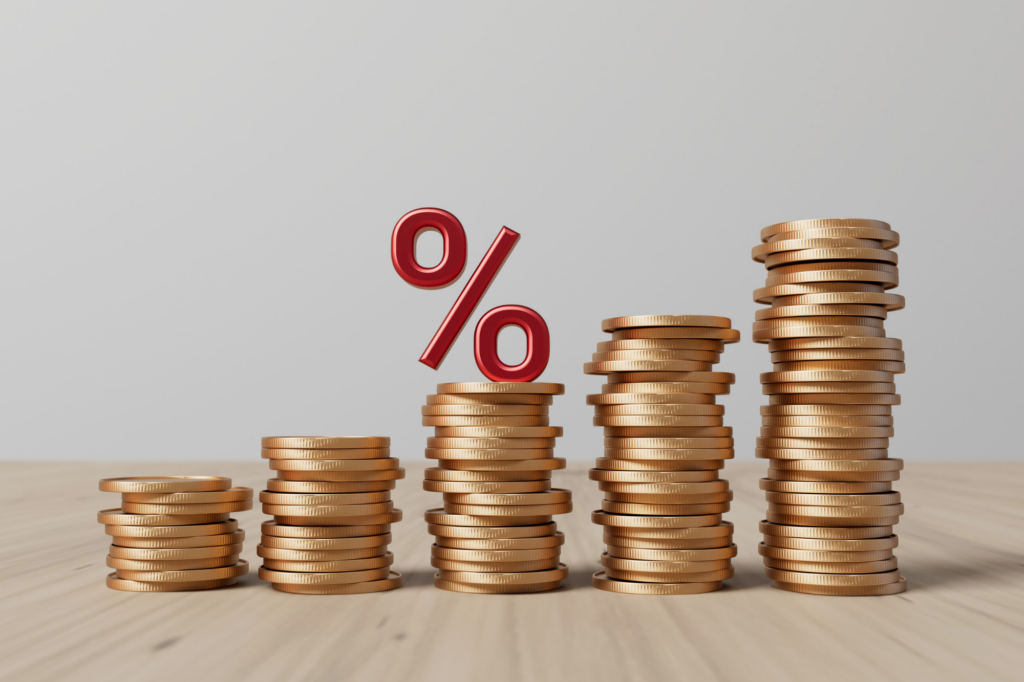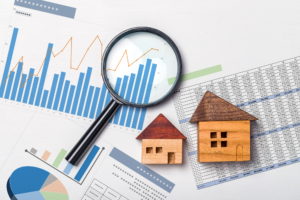Key Takeaways
- Fixed-rate home loans usually have a fixed period of 1-5 years wherein the interest rate stays the same before it rolls over to the variable rate.
- Meanwhile, variable rates can change anytime based on the Reserve Bank of Australia’s cash rates and other factors.
- There have always been more variable-rate loans than fixed-rate loans, but there have been periods when fixed-rate loans become a more popular choice.
- Choosing between fixed-rate and variable-rate loans will depend on your risk tolerance and financial situation.
Home loans are tied to changing interest rates. In 2024, choosing between fixed-rate and variable-rate mortgages will become even more important for homeowners as the geo-political volatility threatens to put more pressure on inflation.
The right type of mortgage depends on your personal and financial situation, with both options having unique advantages and disadvantages. Some lenders offer good deals on fixed rates, but whether you choose fixed or variable loans depends on your circumstances, what you can afford and your risk tolerance for rate changes.
What Are Fixed Rate Loans?
A fixed-rate loan has a constant interest rate and fixed repayments. This rate remains unchanged, or “locked in,” for a fixed period, typically around 1 to 5 years, providing stability in your repayments. After the fixed period ends, the loan reverts to a variable interest rate.
Pros
- Stability During Fixed Period: Fixed interest rates offer predictability. Your monthly payments stay the same during the fixed-rate period, and your rate remains unchanged when rates increase. This gives borrowers peace of mind as they won’t have to budget for higher payments.
- Protection from increasing rates: Even if your lender raises their rates, your fixed rate and repayments stay the same. This can be helpful for first-time homeowners getting used to regular repayments.
Cons
- No potential rate cuts: You won’t be able to take advantage of rates when market rates decrease because your interest rates are locked in for a fixed period.
- Less Flexibility: You may not have access to extras like redrawing or the ability to make extra repayments to pay off your loan quickly.
- Potential for Significantly Higher Rates: You could be subject to the standard variable rate when the fixed-rate period ends. If the variable rate is considerably higher than the fixed rate, you may face significantly higher repayments, known as “rate shock”. This can be difficult for some borrowers to manage if they’re not prepared for a higher revert rate.
What Are Variable Rate Loans?
A variable-rate loan means your interest rate can vary or “go up or down” during the loan term. If the rate drops, you pay less interest on your home loan. Variable rates change with the Reserve Bank of Australia’s cash rate, reflecting the current economy.
Pros
- Flexibility in Repayment Options: A variable rate loan allows you to make extra repayments or shorten your loan term to pay off your debt faster. You can also redraw these extra funds if needed later. Many variable-rate home loans include an offset account feature, which can reduce the interest you pay.
- Benefit From Rate Cuts: When interest rates decrease, your rate may also decrease, saving you money on interest right away.
Cons
- Uncertain budgeting: Since the interest rate on a variable loan can change, it’s more difficult to plan and budget for your monthly repayments.
- Exposure to Rate Increases: Variable interest rates are affected by broader economic conditions. Inflation, unemployment, and global economic trends can influence variable interest rates, making it challenging for borrowers to repay higher rates.
Fixed vs. Variable Rate Loans
The majority of home loans in Australia are variable-rate. In April 2024, the total value of variable-rate home loans reached up to $50 billion, while the total value of fixed-rate loans was only around $591 million. These numbers include refinances.
Historically, there have always been more variable-rate loans in the country. However, during the pandemic, fixed-rate home loans rose to almost the same numbers as variable-rate loans due to certain policies that lowered the fixed-rate offerings.
Most of these pandemic-time fixed-rate loans have already rolled over to the variable rate, with the rest set to follow by the end of the year.
Even though the homeowners whose fixed periods have expired face much higher repayments, most of them have enough income or financial buffer to still meet their obligations.
What Are the Latest Rates?
AMP, Macquarie Bank, and the Bank of Queensland have lowered their fixed rates to below 6%. The big four banks—ANZ, Commonwealth Bank, NAB, and Westpac—have kept their fixed rates between 6.59% and 6.69%. Meanwhile, variable rates have risen above 7%.
Future Outlook
The Reserve Bank of Australia’s cash rate has remained at 4.35% for the last 6 meetings since November 2023. Some think the unchanging rates indicate that inflation has peaked and is about to drop, but a range of economists are now flagging that inflation is sticky and rates could go higher.
While there is no way for sure to tell which way rates are heading, the geo-political risks to supply chains are inflationary and there’s a growing case for the risk-averse to fix a portion or all of your mortgage.
How to Choose Between Fixed and Variable Rate Loans
Assess Your Risk Tolerance
Choosing between fixed and variable loans depends on how much risk you are comfortable with. Fixed loans have a stable interest rate, which is helpful when interest rates rise. Variable loans, however, are more flexible, but they can change, meaning your repayments might go up or down. While you can take advantage of potential rate drops, you also expose yourself to the risk of increasing repayments when interest rates increase.
It’s up to you how much risk you’re willing to take and how confident you are in the state of the market.
Determine Your Personal Financial Situation
Assessing your financial situation means looking at your income stability, debts, and overall financial health. If you have a steady job with a predictable income, you might be comfortable with a variable rate loan’s possible changes. However, if your income is irregular or you have many financial obligations, a fixed-rate loan could give you the stability to manage your budget better. However, you need to be ready by the time your rate rolls over so you don’t get blindsided by potentially higher rates.
Consult with Experts
Consulting with mortgage brokers can give you helpful advice tailored to your situation. They’ll look at your finances, income, expenses, debts, and goals to find the best loan for you.
Mortgage brokers keep track of economic trends, interest rates, and lender rules. They can give you useful information about the current lending situation and predict possible rate changes, so you can make a smart decision.
Secure Your Dream Home with the Right Loan
Looking to buy a property, refinance, or invest? Our loan experts offer tailored solutions to help you make informed decisions with today’s unpredictable interest rates.



